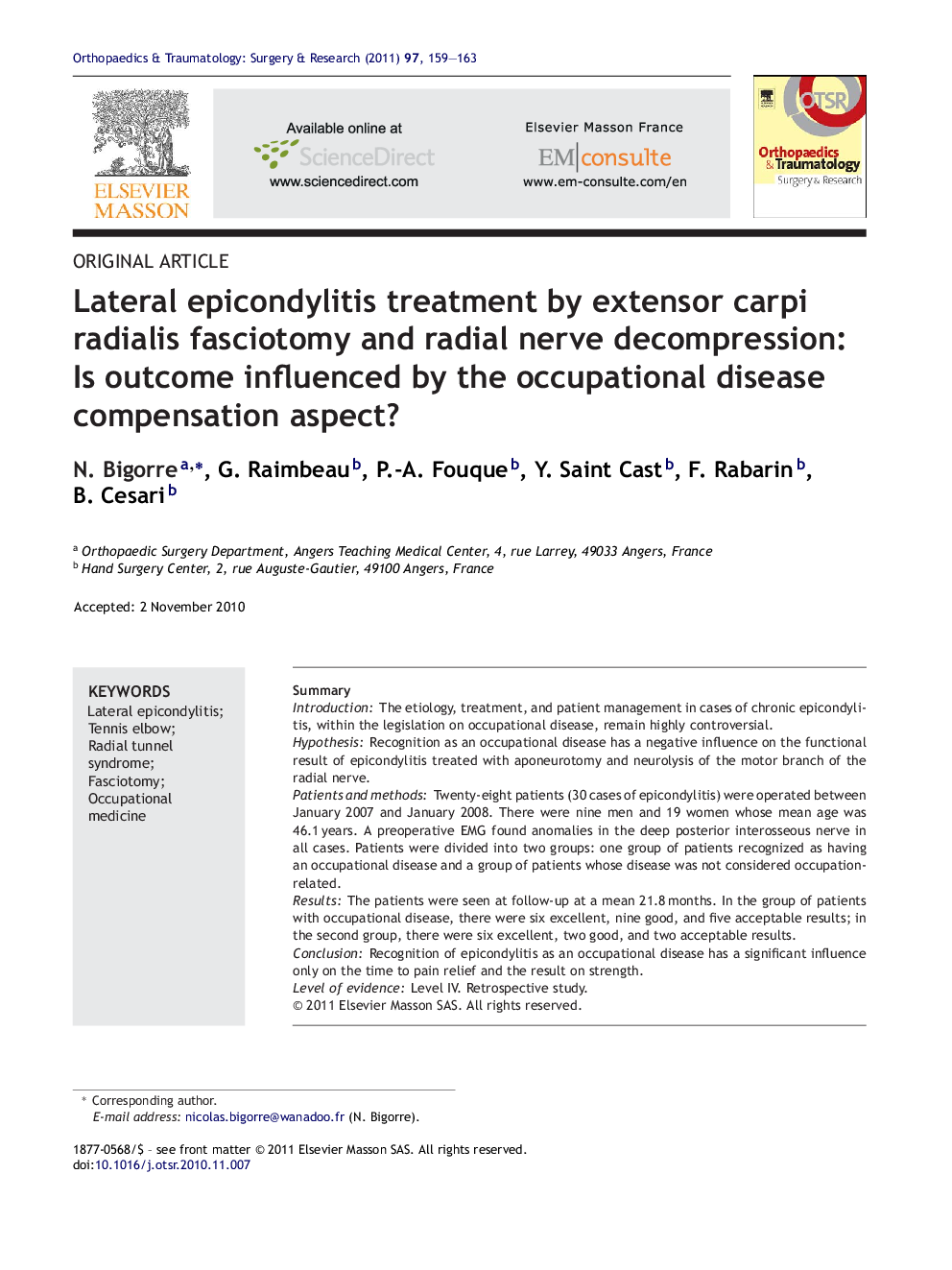| Article ID | Journal | Published Year | Pages | File Type |
|---|---|---|---|---|
| 4082080 | Orthopaedics & Traumatology: Surgery & Research | 2011 | 5 Pages |
SummaryIntroductionThe etiology, treatment, and patient management in cases of chronic epicondylitis, within the legislation on occupational disease, remain highly controversial.HypothesisRecognition as an occupational disease has a negative influence on the functional result of epicondylitis treated with aponeurotomy and neurolysis of the motor branch of the radial nerve.Patients and methodsTwenty-eight patients (30 cases of epicondylitis) were operated between January 2007 and January 2008. There were nine men and 19 women whose mean age was 46.1 years. A preoperative EMG found anomalies in the deep posterior interosseous nerve in all cases. Patients were divided into two groups: one group of patients recognized as having an occupational disease and a group of patients whose disease was not considered occupation-related.ResultsThe patients were seen at follow-up at a mean 21.8 months. In the group of patients with occupational disease, there were six excellent, nine good, and five acceptable results; in the second group, there were six excellent, two good, and two acceptable results.ConclusionRecognition of epicondylitis as an occupational disease has a significant influence only on the time to pain relief and the result on strength.Level of evidenceLevel IV. Retrospective study.
